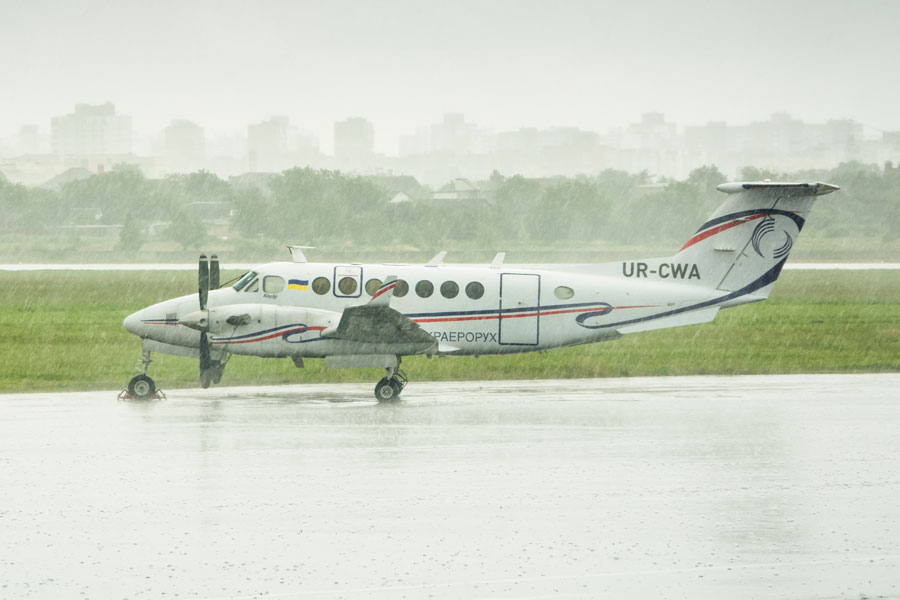
ALBANY, N.Y. – The New York Power Authority (NYPA) is drawing renewed scrutiny after an investigative report by the USA Today Network/Lohud revealed details about its use of a $7.5 million twin-engine turboprop for executive and trustee travel. The disclosure comes as New York continues to promote ambitious clean-energy goals, raising questions about cost, optics, and consistency with the state’s climate agenda.
Key Findings from the Investigation
- The aircraft and purchase: Records show NYPA purchased a Beechcraft King Air B300 (King Air 350 series) in 2022. The aircraft, registered as N350NY, has since been in active use.
- Maintenance costs: Between October 2022 and August 2024, NYPA logged $122,603 in maintenance expenses for the plane.
- Stated purpose: NYPA officials indicate the aircraft supports travel by executives and trustees to facilities and meetings across the state, providing a practical way to reach locations not easily served by commercial airlines.
- Historical context: NYPA has maintained aircraft for decades, with a previous Beechcraft King Air purchase scrutinized in 2013 by the State Comptroller.
Why the Plane Raises Questions
The use of an agency-owned aircraft stands in contrast to New York’s push to decarbonize its economy. While turboprops typically burn less fuel than light jets over shorter distances, the fact that a clean-energy authority relies on fuel-powered executive travel underscores the tension between policy goals and operational practices. Broader research also shows that private and government-linked aviation emissions have risen in recent years, intensifying scrutiny of such arrangements.
Policy Backdrop
NYPA’s own sustainability materials highlight its “clean energy vision,” which emphasizes reducing carbon emissions and expanding renewable power. At the same time, state lawmakers are weighing incentives such as a sustainable aviation fuel (SAF) tax credit (S1229) to lower emissions from aviation. The existence of a state-funded aircraft dependent on traditional fuel is a sharp juxtaposition to those ambitions, and it has become central to the debate over credibility and public trust.
Quick Facts
| Category | Detail |
|---|---|
| Agency | New York Power Authority (NYPA) |
| Aircraft | Beechcraft King Air B300/350 (reg. N350NY) acquired 2022 |
| Reported maintenance | $122,603 (Oct 2022 – Aug 2024) |
| Purpose stated | Travel for executives and trustees to statewide facilities and meetings |
| Historical context | Prior King Air purchases, including a 2013 review by the Comptroller |
| Policy tension | Clean-energy goals vs. reliance on fuel-burning executive travel; SAF tax credit under consideration |
QQ&A: Understanding the NYPA Aircraft Issue
Q: Is the NYPA plane new?
A: Yes. NYPA added the current King Air B300 in 2022, documented under registration N350NY.
Q: How much has it cost to keep flying?
A: Maintenance expenses totaled $122,603 between late 2022 and August 2024, according to the USA Today Network/Lohud investigation.
Q: Why use a turboprop, not a jet?
A: Turboprops are generally more fuel-efficient than jets on shorter routes, but they still produce emissions, raising concerns for an agency committed to clean energy.
Q: How does this square with climate goals?
A: NYPA highlights decarbonization as a core mission, and lawmakers are considering a sustainable aviation fuel tax credit. The contrast between those goals and executive air travel is what drives current scrutiny.
Q: How often is the plane actually used?
A: Flight records and reporting indicate the aircraft is used for travel to NYPA facilities and board meetings, though the exact frequency has not been fully disclosed. This limited transparency is part of why questions are being raised.
Q: What alternatives could NYPA use instead of owning a plane?
A: Alternatives include commercial flights for longer distances or state vehicle use for shorter trips. Critics argue these options could reduce costs and align better with clean-energy goals, though NYPA points to scheduling flexibility and access to remote sites as reasons for maintaining an aircraft.


